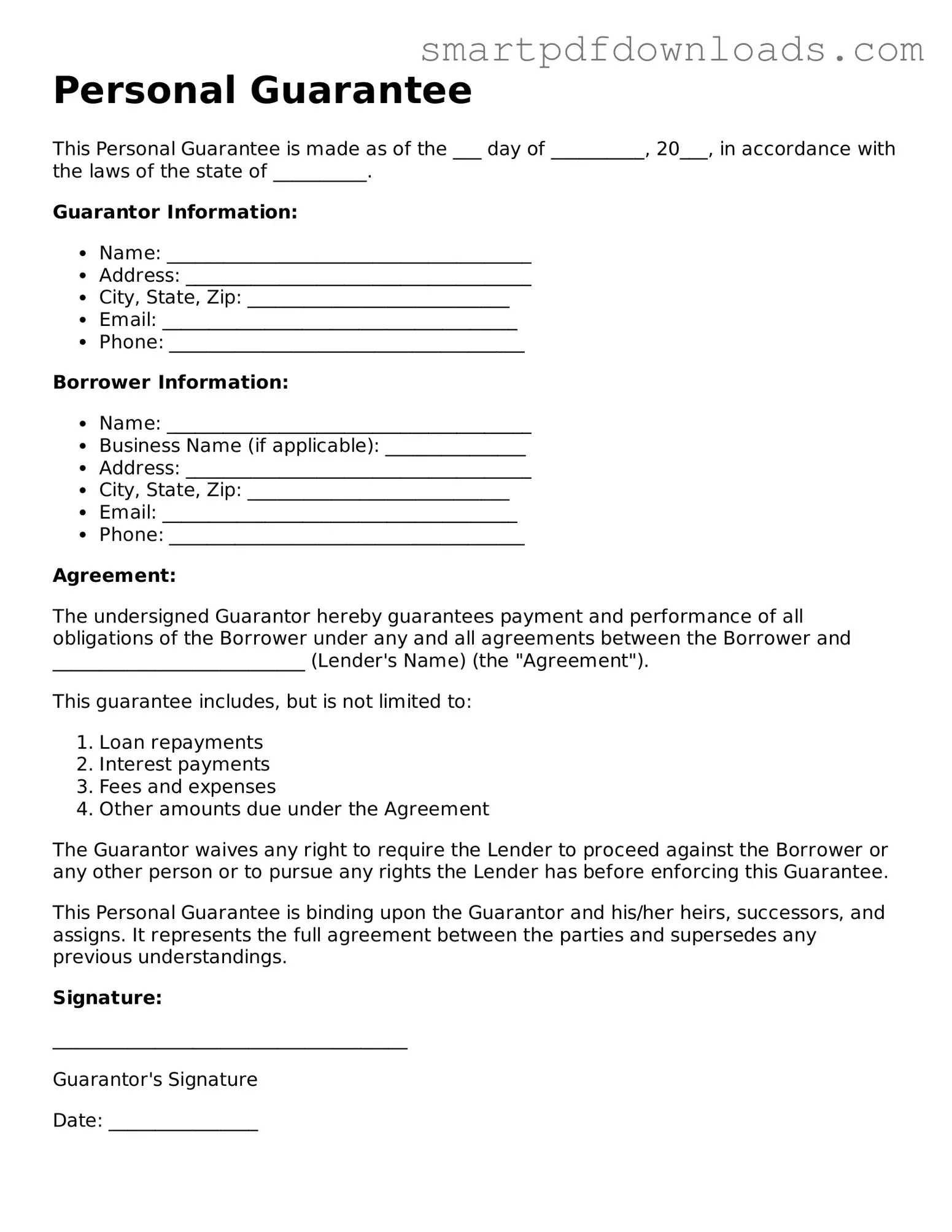Personal Guarantee
This Personal Guarantee is made as of the ___ day of __________, 20___, in accordance with the laws of the state of __________.
Guarantor Information:
- Name: _______________________________________
- Address: _____________________________________
- City, State, Zip: ____________________________
- Email: ______________________________________
- Phone: ______________________________________
Borrower Information:
- Name: _______________________________________
- Business Name (if applicable): _______________
- Address: _____________________________________
- City, State, Zip: ____________________________
- Email: ______________________________________
- Phone: ______________________________________
Agreement:
The undersigned Guarantor hereby guarantees payment and performance of all obligations of the Borrower under any and all agreements between the Borrower and ___________________________ (Lender's Name) (the "Agreement").
This guarantee includes, but is not limited to:
- Loan repayments
- Interest payments
- Fees and expenses
- Other amounts due under the Agreement
The Guarantor waives any right to require the Lender to proceed against the Borrower or any other person or to pursue any rights the Lender has before enforcing this Guarantee.
This Personal Guarantee is binding upon the Guarantor and his/her heirs, successors, and assigns. It represents the full agreement between the parties and supersedes any previous understandings.
Signature:
______________________________________
Guarantor's Signature
Date: ________________
By signing, the Guarantor acknowledges that he/she has read and understands this Personal Guarantee.
